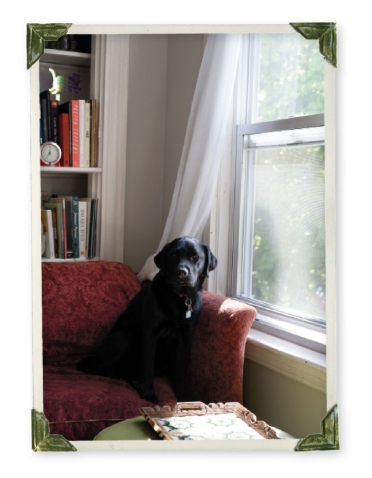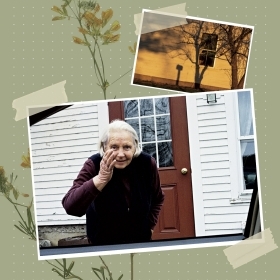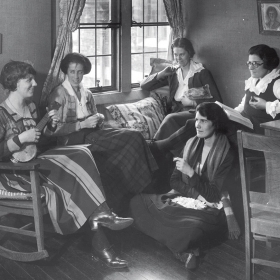In the early 1920s, as automobile sales and the reach of cross-country highways increased, the Eastman Kodak Company launched a marketing campaign placing signs on popular driving routes across the United States. “Picture Ahead! Kodak as you go,” they declared from the roadside, encouraging the everyday use of a still-novel technology. No matter if you took the same photo as everyone else—“picture spots” made noticing easy.
Later, the language on the signs shifted to “there’s always a picture ahead,” and then to titles like “Kodak Scenic Spot.” I like that first version, though: “Picture Ahead!” It works as a marker, but also as a verb in the imperative, a directive.
At 24, it seems like a lot of overt “Picture Ahead!” signs are right behind me. Like a road trip, college has a beginning and a destination. After has a beginning, too. But then it’s a series of vaguely defined experiences that make me feel like a tourist taking a photo I could get a better version of on a postcard. The landscape is reduced to the generic rhythms of early adulthood. When it seems like nothing I am doing or feeling is original, what can I picture ahead?
I’ve lived in the same apartment since the summer after graduation, and when I look around, I register that it’s nothing like it was when I moved in. Some of that is familiarity—knowing the space. It’s a three-bedroom, so some of it’s the company—saying goodbye to a roommate after a year, knowing the other far better than I did when we moved in as strangers, and getting to know the one who joined us last summer.
Some of the difference is from settling in—when there was a piece of furniture I kept bumping into, I moved it a couple of inches to the right. Over time, the place has become more and more ours, as we’ve saved up for different furniture, painted the plastic paneling in the kitchen, and lived here in earnest. It’s hard to imagine a time when I’ll forget the ordeal of carrying the cumbersome couch I bought from a person on the internet into our second-floor unit. (We briefly took the kitchen door off its hinges. No regrets.) All of this reminds me that change can happen incrementally; it can happen in place.
Kodak didn’t invent noticing, but there is a reason that it worked to market cameras as tools for memorizing and memorializing what matters to us now. Whether or not we’re looking through a camera lens, what we notice becomes what we remember. So, I’ll try to notice as I go.
On a sunny day in early spring, between the hours of 4 and 6 p.m. (give or take), in my living room with a window open, everything is OK. When there’s a little breeze blowing the sheer curtains, and I’m sitting on that big couch, and I’m listening to a song I love, and my dog gets up from her afternoon nap to sit in my lap even though she’s too big for that now, everything is exceedingly OK, and it’s a picture spot, defined by me.
Every few months, a group of my former Wellesley studio art classmates meets virtually. We share anything we’ve been making or project inklings we’ve had. A little while back, a friend who now works as a studio assistant told us about helping an artist with a particular piece. While they were making it, “everything felt a little bit possible,” she said.
Next time our group talks, maybe I’ll share some of what I’ve been making lately. When I notice that I like how the light is falling in my apartment, now and then I will literally photograph it, even though I’ve already accumulated many such pictures. It’s not taking the exact same photo as everyone else, but it’s still an act of intentionally repeating something that has been done before. Because this version is today, today, today. See? Some things are always beautiful.
Road sign or not, I want to notice when delight feels like a reflex, when everything feels a little bit possible.
Grace Ramsdell ’22 is a photographer, the Alumnae Association’s communications specialist, and an editor for this magazine. She lives in Somerville, Mass., with her two roommates (both also named Grace) and her dog (not named Grace). The photo above is from her series of images in her apartment.








We ask that those who engage in Wellesley magazine's online community act with honesty, integrity, and respect. (Remember the honor code, alums?) We reserve the right to remove comments by impersonators or comments that are not civil and relevant to the subject at hand. By posting here, you are permitting Wellesley magazine to edit and republish your comment in all media. Please remember that all posts are public.